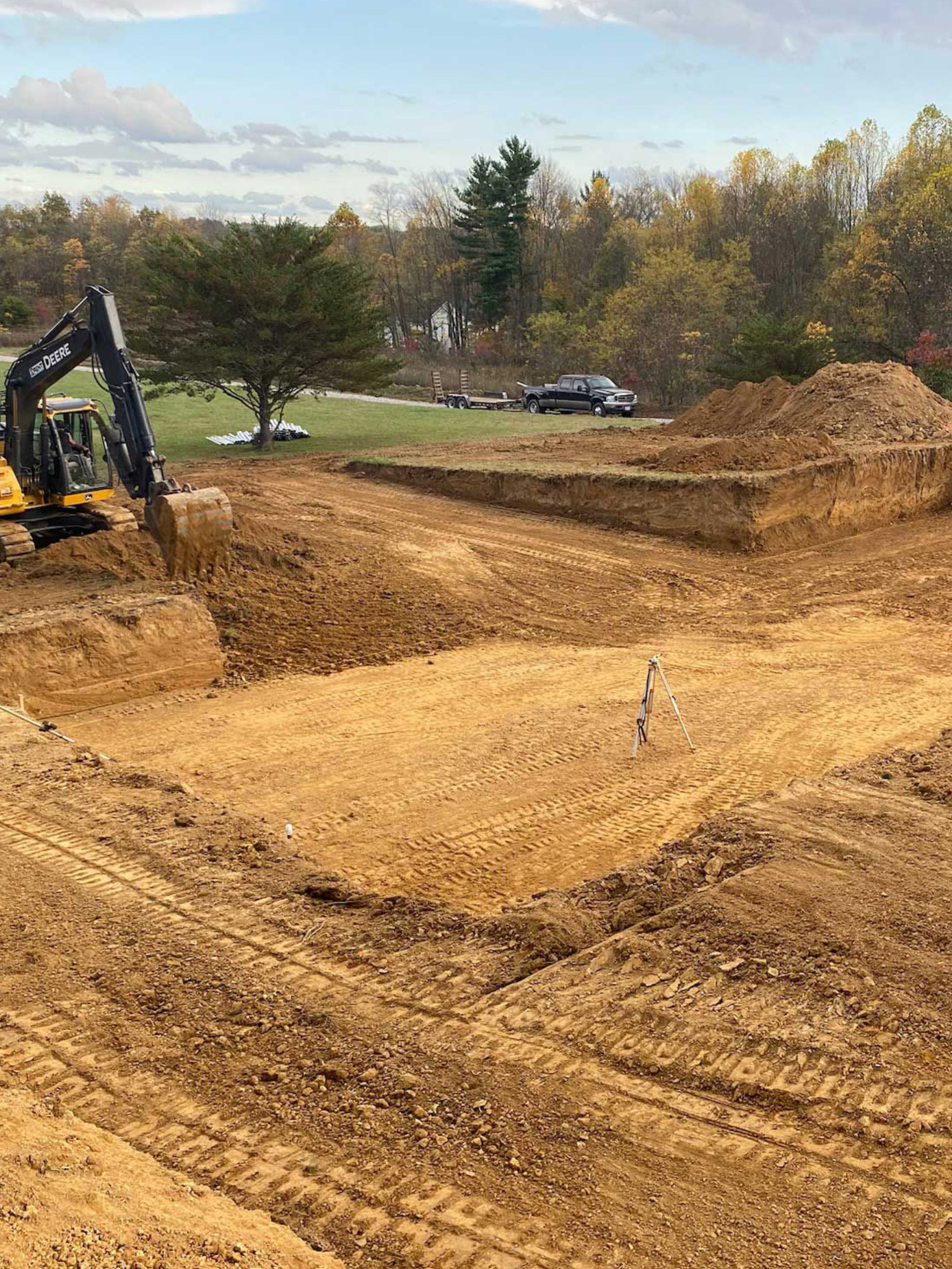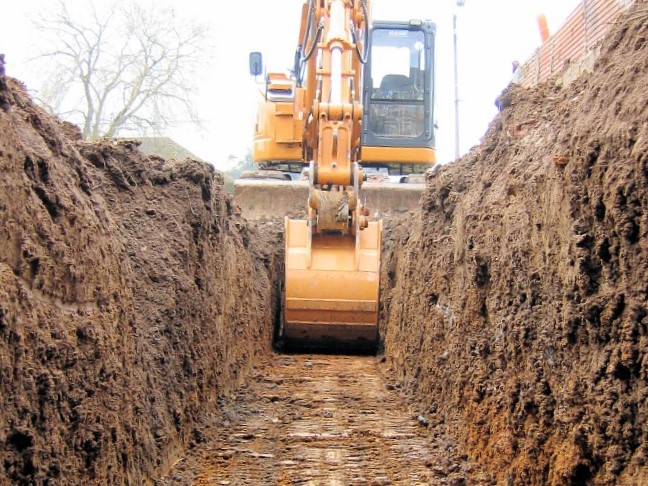Residential Excavating Ohio - Specialized Excavation for Ohio Homes
Residential Excavating Ohio - Specialized Excavation for Ohio Homes
Blog Article
Thorough Expedition: The Science Behind Superior Excavation Practices
From ancient hand devices to contemporary hydraulic excavators, the development of excavation techniques has been a testimony to human resourcefulness and technological developments. What really establishes superior excavation techniques apart is a deep understanding of geological principles, paired with the utilization of cutting-edge tools and approaches.
Advancement of Excavation Techniques
Throughout background, the advancement of excavation techniques has actually played a critical role beforehand building practices and archaeological explorations. From the fundamental devices used by our forefathers to the innovative equipment used in modern-day times, the development of excavation techniques has substantially transformed just how we approach different projects.
In old times, manual work with standard devices such as wheelbarrows, pickaxes, and shovels was the main approach of excavation. This labor-intensive process restricted the deepness and extent of excavations, typically causing sluggish development and restricted accessibility to specific sites. However, as civilizations advanced, so did the tools and techniques used for excavation.
The Industrial Transformation noted a transforming point in excavation exercise with the introduction of steam-powered equipment. This technology reinvented the area, permitting faster and extra considerable excavations. In modern times, modern technology plays a critical function in excavation, with developments like general practitioner systems, drones, and 3D scanning boosting precision and efficiency in the area. The development of excavation strategies remains to shape the way we develop, discover, and understand the world around us.
Role of Technology in Excavation

The combination of cutting-edge modern technology has fundamentally revolutionized the field of excavation, boosting accuracy and effectiveness to unmatched levels - lancaster trenching. One of the essential technological improvements that has dramatically influenced excavation practices is the use of GPS systems.
Additionally, the development of 3D modeling and simulation software program has structured the planning process for excavation tasks. Drivers and engineers can now envision the whole excavation procedure before beginning, maximizing and recognizing prospective obstacles workflow. Together with this, the execution of drones in excavation tasks has actually promoted airborne studies, volumetric measurements, and website examinations with unparalleled rate and precision.
Geological Principles in Excavation
An understanding of geological concepts is necessary for making certain the architectural integrity and security of excavation sites. Geological elements play a vital function in figuring out the expediency and security of excavation projects (septic ohio). One vital geological concept to think about is the sort of soil or rock present at the website. Different dirt types, such as gravel, sand, or clay, have differing levels of stability and navigate to this site call for various excavation methods. Natural dirts like clay might need additional support to avoid collapses, while sandy dirts might be prone to disintegration throughout excavation.
In addition, the geological structure of the location, consisting of faults, cracks, and rock formations, should be carefully analyzed to recognize potential threats and obstacles. Digging deep into near geological fault or unsteady rock formations can result in instability and prospective threats. By conducting extensive geological surveys and analysis, engineers and excavators can establish techniques to minimize threats and guarantee the effective conclusion of excavation projects. Ultimately, integrating geological concepts right into excavation techniques is vital for accomplishing risk-free, effective, and lasting results.

Latest Tools for Excavation
In the realm of excavation practices, modern technologies in devices have transformed the efficiency and accuracy of excavation procedures. These drones can offer detailed airborne surveys of excavation sites, offering real-time information on topography and possible dangers.
An additional cutting-edge tool gaining popularity is the execution of 3D printing innovation for developing customized excavation devices. This permits for the manufacturing of specialized tools that are tailored to the advice specific demands of a job, boosting effectiveness and minimizing downtime.
In addition, advancements in products scientific research have actually brought about the growth of more powerful and a lot more long lasting excavation devices. lancaster trenching. Tungsten carbide-tipped excavator see post add-ons, as an example, offer remarkable performance in difficult ground conditions, boosting productivity on-site
Scientific research's Effect on Excavation Practices

In addition, improvements in materials scientific research have actually brought about the development of more powerful, a lot more durable excavation devices and tools. For instance, making use of composite products in miners and shovels has enhanced their performance and long life, eventually enhancing efficiency on excavation sites. Furthermore, scientific study on dirt auto mechanics and geotechnical engineering has supplied important understandings into dirt behavior, permitting excavation specialists to make educated choices concerning excavation techniques and soil stablizing methods. Overall, scientific research remains to drive innovation and enhancement in excavation methods, making excavation tasks a lot more reliable, affordable, and lasting.

Conclusion
Finally, the advancement of excavation strategies has actually been substantially affected by developments in modern technology and a much deeper understanding of geological concepts. The most current devices and tools made use of in excavation have actually enhanced effectiveness and accuracy in the field. The application of clinical understanding has significantly boosted excavation techniques, leading to extra sustainable and effective methods for digging deep into numerous kinds of materials.
In the realm of excavation methods, contemporary innovations in tools have reinvented the efficiency and accuracy of excavation procedures. By leveraging scientific principles, the excavation sector has been able to considerably improve efficiency, precision, and safety and security in excavation procedures. GPR enables excavation teams to non-invasively check and map subsurface frameworks, utilities, and prospective hazards, enabling them to intend excavation projects with better precision and reduced threat of crashes.
Additionally, scientific research study on dirt technicians and geotechnical engineering has offered valuable understandings right into soil behavior, allowing excavation professionals to make enlightened choices relating to excavation techniques and soil stabilization strategies. Overall, science continues to drive technology and enhancement in excavation methods, making excavation projects more efficient, cost-effective, and sustainable.
Report this page